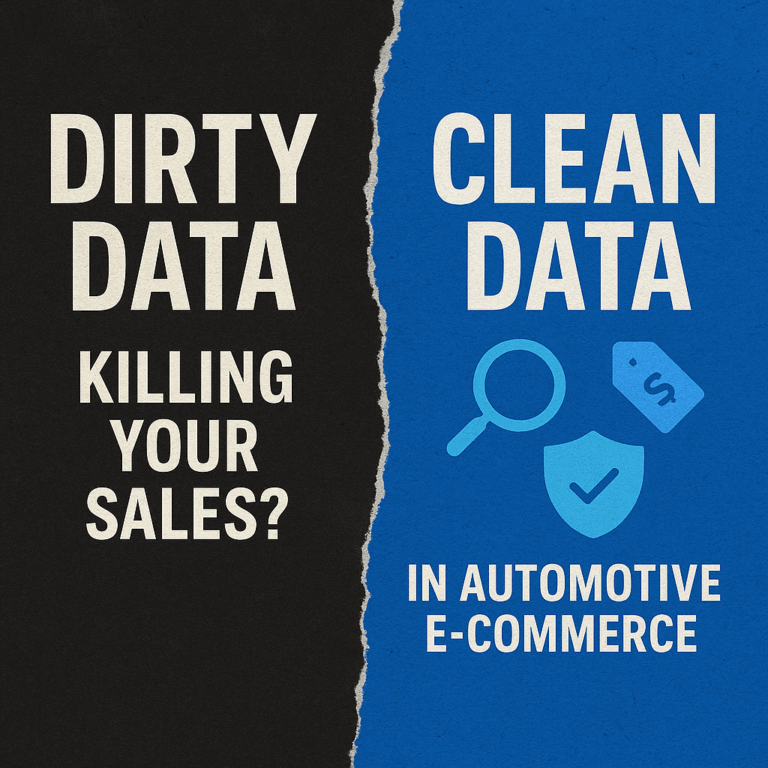

Stephanie Benger, Marketing Director at DH2T, had the opportunity to sit down with Shelly Pike of ESP Truck Accessories to explore the company’s remarkable journey from humble beginnings to industry success. In this insightful interview, Shelly discusses how ESP’s dedication to building strong partnerships, leveraging cutting-edge inventory management tools like DH2T Slingshot Automotive and Turn 14 Distribution apps, and prioritizing customer satisfaction have propelled them from niche market players to prominent leaders in the truck accessories industry.
Curious to learn more about the strategies and insights that fueled ESP’s growth? Dive into Shelly’s inspiring story and discover valuable lessons for success in the automotive ecommerce industry.
Stephanie Benger (SB): Shelly, let’s start with a bit of history. How did ESP Trucks get its start, and what has the journey been like?
Shelly Pike (SP): ESP Trucks Accessories began as a small business focused on underseat storage solutions for trucks. We offered both lockable and non-lockable storage units, which quickly gained popularity among truck owners. My husband and I run the business together—he’s the main installer and manager, and I handle much of the business operations. My husband worked at Toyota for 20 years, specializing in installations and customer service, which really laid the groundwork for our own business.
Over the years, we expanded our product offerings significantly. What started with just a handful of products has grown into a comprehensive catalog of over 20,000 different truck and vehicle accessories. We manufacture our products locally in the U.S., assemble them at our brick-and-mortar shop, and offer installation services as well. It’s been a rewarding journey, seeing how far we’ve come from those early days.
SB: That’s an impressive scale of growth. What would you say has been the key to maintaining such rapid expansion while still keeping customer service a priority?
SP: Customer service has always been the cornerstone of our business. We both come from backgrounds where the customer was always the focus—whether it was my husband dealing directly with clients at Toyota or me working in the aerospace industry. We make it a point to answer every call, get the right information, and ensure that our customers are satisfied. We’ve built a loyal customer base by being attentive and responsive. If a manufacturer doesn’t have the information readily available, we dig deeper to get it for our customers, and we make sure it’s updated on our site. That commitment to service has been essential to our growth.
SB: With such a large range of products, how do you manage all the data and inventory to ensure everything runs smoothly?
SP: Managing inventory for over 20,000 products is definitely a challenge, but we’ve found a few tools and apps that have made it manageable. For starters, we use Convermax for year, make, and model searches. These tools have been vital because our customers often need to find products that are specific to their vehicle. We’ve been using these tools for years, and their support has been excellent. I can always get someone on the phone quickly if there’s an issue, which is crucial for keeping our operations running smoothly.
In terms of inventory management, we’re connected through platforms like SEMA, ASAP, and Turn 14, which help us download and manage our product data. Recently, we added the Slingshot app to our toolkit. Also, the Turn 14 app has been a great asset, keeping our data up-to-date and running smoothly in the background.
SB: Have you faced any challenges integrating new apps and managing a large inventory? If so, how have you successfully addressed them?
SP: Yes, there have been challenges. For example, the Slingshot app has introduced some confusion with part numbers, particularly with those four-digit prefixes. It’s a necessary adjustment because Slingshot needs to harmonize SKU numbers across multiple distributors, but it does make searching for specific parts a bit more complicated. We’re working through these issues by sending feedback to the support team and making adjustments on our end.
Another challenge has been managing inventory levels. We initially had stock tracking turned on, but we found it difficult to manage because of discrepancies in stock levels across our distributors. For instance, Turn 14 might show an item as out of stock, but we can sometimes find it at Keystone or Myers. To address this, we’ve turned off stock tracking for certain items and now manually check availability across multiple distributors before fulfilling orders. It’s not the most efficient method, but it’s what works best for us at the moment.
SB: That sounds like a lot to juggle. How do you find the time to manage all these aspects of the business?
SP: It’s definitely a balancing act. My husband and I wear many hats, and it can be overwhelming at times. But we’ve learned to take things one step at a time. When we first started using the Turn 14 app, I had to tackle it piece by piece—learning how to use the settings, manage stock, adjust margins, and so on. It was a steep learning curve, especially since it was just me handling most of it. But once I got the hang of it, things started to run much more smoothly.
SB: Did you have any help during the onboarding process for these apps?
SP: Yes, we did. We had a couple of onboarding meetings that were very helpful. The first meeting was a walkthrough of the store and how the app integrates with it, which gave me a good understanding of the basics. Then, a few weeks later, we had a more detailed session where we dove into the finer points of using the app to manage our store. I’m a big note-taker, so I took lots of notes during those meetings and then spent time afterward exploring the system on my own to fine-tune everything. It took some time to iron out all the issues, but the support we received was very good, and eventually, we got everything running smoothly.
SB: With all the tools and apps you’re using, how do they fit into your day-to-day operations? Are there any particular strategies you use to manage everything?
SP: We’ve integrated these tools into our daily workflow in a way that supports both our online and in-store operations. For example, while we have a brick-and-mortar location, most of our business is conducted online. The Turn 14 app, in particular, helps us manage our online inventory efficiently. It runs in the background, keeping our data up-to-date, so we don’t have to worry too much about over-selling or incorrect stock levels.
However, as I mentioned earlier, we’ve turned off stock tracking for some items. This decision was driven by the need to manually verify stock across multiple distributors, which can be more accurate in certain cases. While this approach adds extra steps to our process, it gives us more control over our inventory and helps us avoid disappointing customers with out-of-stock items.
SB: It sounds like you’ve developed a system that works well for your business. What are your plans for the future, especially in terms of expanding your offerings or marketing strategy?
SP: We’re looking to shift our advertising strategy to focus more on drop-shipped branded parts. There’s been a noticeable increase in demand for these products, and we want to tap into that market more effectively. Currently, our advertising has been more focused on our branded parts, but we’re planning to diversify that approach.
SB: That sounds like an exciting direction. Speaking of collaborations, how has your experience been working with different distributors like Turn 14 Distribution, Keystone, and Meyer?
SP: Turn 14 has been our primary distributor, and they’ve been fantastic to work with. Their support is top-notch, and they’re very responsive when it comes to returns or any other issues that arise. Keystone has also been a reliable partner, especially since they’re located close to us, which allows us to pick up products and offer same-day installations. Myers has been a bit less responsive, but they still provide valuable backup when needed.
One trend we’ve noticed is the consolidation of brands under larger companies like RealTruck. This has caused some hiccups, particularly with inventory being moved between warehouses, but we’re adapting as best we can. It’s part of the industry’s evolution, and we’re just going with the flow.
SB: That’s interesting. How do you see these industry trends affecting your business in the long term?
SP: The industry is definitely changing, with more consolidation and shifts in how products are distributed. For us, staying flexible and being able to adapt to these changes is crucial. We’re always on the lookout for new opportunities and ways to improve our operations. For example, we’re considering adding more manufacturers to the Slingshot app, which would help us get more accurate and up-to-date data directly from the source.
Looking ahead, we’re also exploring potential research projects with universities to help improve data management and inventory synchronization across multiple distributors. It’s still in the early stages, but if it comes to fruition, it could be a significant step forward for us.
SB: Shelly, it’s been great hearing about your journey with ESP Trucks. Any final thoughts you’d like to share?
SP: It’s been a long and sometimes challenging journey, but we’ve learned so much along the way. The key has been staying patient, being willing to learn, and always putting our customers first. We’re excited about the future and looking forward to continuing to grow our business while maintaining the high standards of service that have gotten us this far.
SB: Thank you so much for sharing your story, Shelly. It’s clear that your dedication to quality and customer service has been a major factor in your success. I’m excited to see what the future holds for ESP Trucks!
SP: Thank you, Stephanie. I appreciate the opportunity to share our story with you.






| Cookie | Duration | Description |
|---|---|---|
| cookielawinfo-checkbox-analytics | 11 months | This cookie is set by GDPR Cookie Consent plugin. The cookie is used to store the user consent for the cookies in the category "Analytics". |
| cookielawinfo-checkbox-functional | 11 months | The cookie is set by GDPR cookie consent to record the user consent for the cookies in the category "Functional". |
| cookielawinfo-checkbox-necessary | 11 months | This cookie is set by GDPR Cookie Consent plugin. The cookies is used to store the user consent for the cookies in the category "Necessary". |
| cookielawinfo-checkbox-others | 11 months | This cookie is set by GDPR Cookie Consent plugin. The cookie is used to store the user consent for the cookies in the category "Other. |
| cookielawinfo-checkbox-performance | 11 months | This cookie is set by GDPR Cookie Consent plugin. The cookie is used to store the user consent for the cookies in the category "Performance". |
| viewed_cookie_policy | 11 months | The cookie is set by the GDPR Cookie Consent plugin and is used to store whether or not user has consented to the use of cookies. It does not store any personal data. |